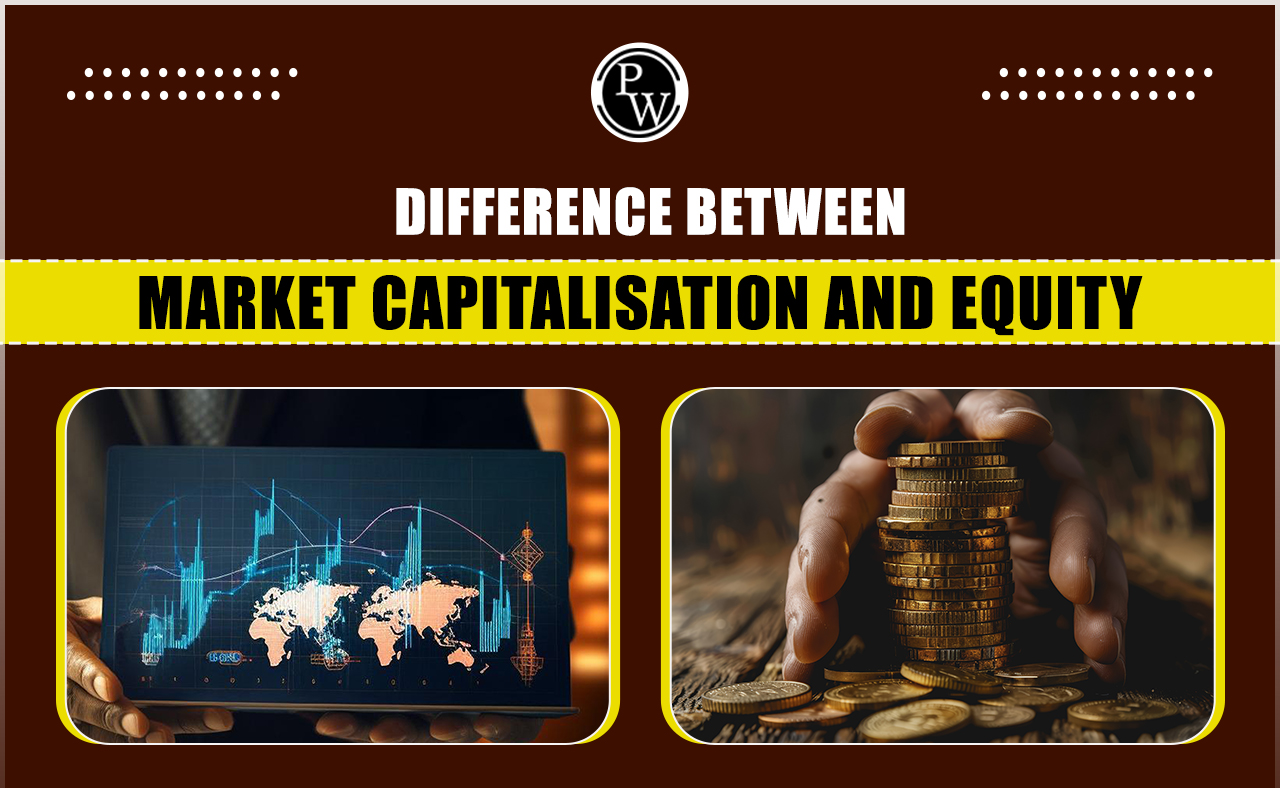
Market capitalisation and equity are fundamental metrics used in financial analysis to assess a company's value and financial health. Market capitalisation quantifies the total market value of a company's outstanding shares, reflecting investor sentiment and market perception. In contrast, equity represents the net worth of a company from an accounting perspective, calculated as total assets minus liabilities.
While market capitalisation fluctuates with stock prices and investor sentiment, equity provides a stable view of a company's financial health and ability to generate shareholder value. Understanding these metrics is crucial for investors and analysts to make informed investment decisions and evaluate a company's strengths.Formula: Market Capitalisation = Current Share Price×Total Number of Outstanding Shares
For example : Let's consider a fictional company called ABC Inc., which has 1 million outstanding shares of stock, and the current market price per share is ₹50. To calculate ABC Inc.'s market capitalisation in rupees:Market Capitalization = Number of Outstanding Shares × Current Market Price per Share
Market Capitalization = 1,000,000 shares × ₹50 per share Market Capitalization = ₹50,000,000 Therefore, ABC Inc.'s market capitalisation would be ₹50,000,000 (fifty million rupees). This figure represents the total value investors in the stock market collectively place on ABC Inc. based on its current stock price and the number of outstanding shares. Market capitalization is a critical metric used by investors to assess a company's size, valuation, and relative importance in the market.| Also Read | |
| Investing Activities: Definition, Investing Activities in Accounting | Concept of Electronic Spreadsheet |
| Agricultural Marketing | Market Supply Curve: Definition, How It Works, and Example |
| Feature | Market Capitalization | Equity |
| Definition | The total market value of a company's outstanding shares of stock. | The net value of a company is calculated as total assets minus total liabilities. |
| Calculation | Share Price × Number of Outstanding Shares | Total Assets - Total Liabilities |
| Reflects | The market's perception of a company's value | The book value of a company's net assets |
| Components | Influenced by stock price and number of shares | Includes share capital, retained earnings, and reserves |
| Volatility | Highly volatile due to changes in stock price | Relatively stable, changes with earnings and losses |
| Usage | Used to assess the company's size and investment potential | Used to evaluate the company's financial health and stability |
| Basis | Market-driven | Accounting-driven |
| Example | A company's market cap might change daily with stock price | Equity changes with retained earnings and financial activities |
| Investor Perspective | Indicator of market confidence and growth potential | Indicator of financial solidity and value to shareholders |
| Balance Sheet Appearance | Not directly shown on the balance sheet | Shown on the liabilities side under shareholders' equity |
Begin your journey towards academic excellence in Commerce with our comprehensive Class 11 Commerce courses . Master the CBSE syllabus with expert guidance and ace your exams. Enroll now!”
